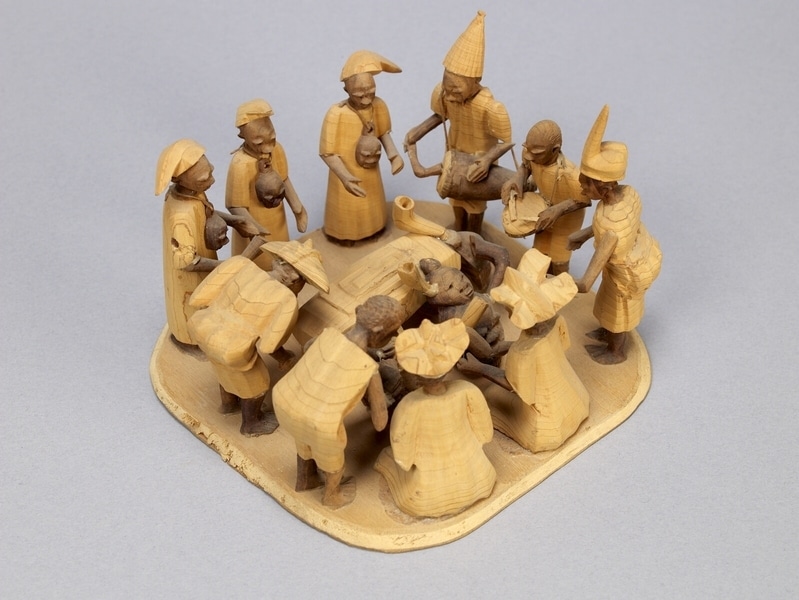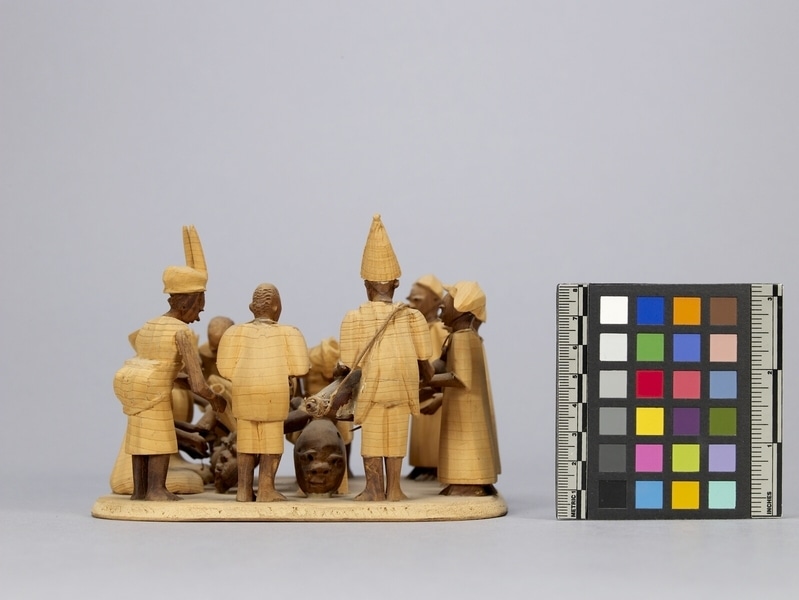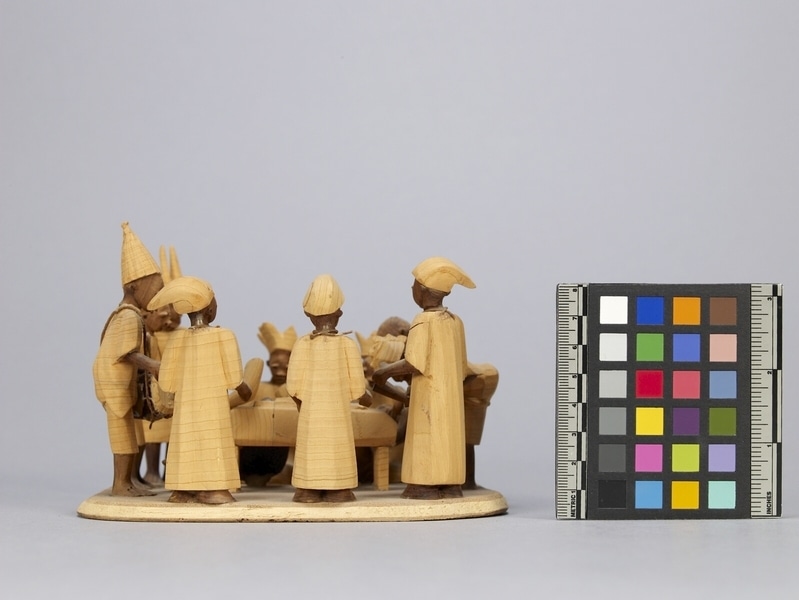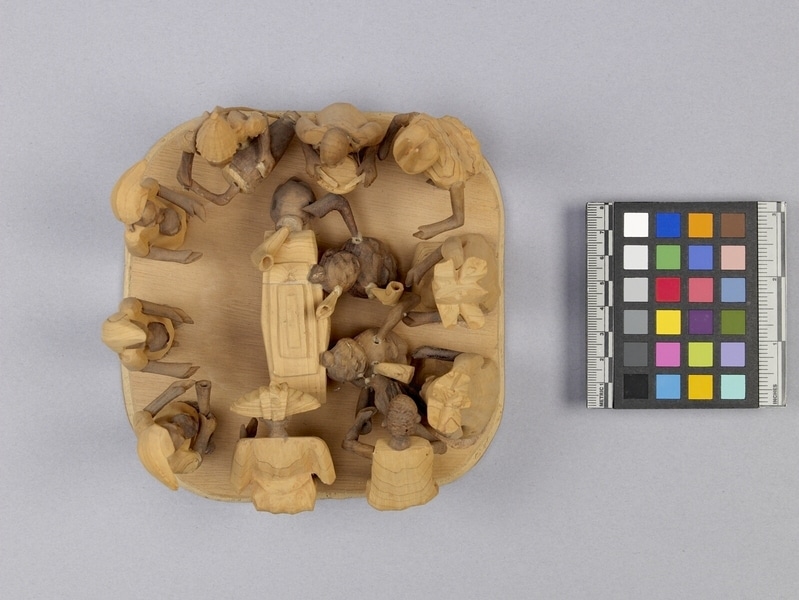Thorn Carving Item Number: Af354 from the MOA: University of British Columbia





Description
Ten figures representing people with arms extended facing a central coffin. Two double-masks are leaning against the side of the coffin while one single-mask is leaning against the end. There is a horn-like container inserted into the masks. Two male figures are wearing short-sleeved long robes and crown-like hats. They are siting on the ground facing the masks. Proceeding clock-wise, first there is a bareheaded male wearing a sleeveless shirt and knee-length pants holding a chicken out to a mask. Second, there is a female wearing a short-sleeved dress and a wide brimmed hat with a sling tied at her waist as she is bowing at the end of the coffin. Next, there are three males wearing short-sleeved long loose gowns with soft pointed hats and small masks strung around their necks, one of which is holding a horn-shaped container. Following, there are two drummers wearing short-sleeved shirts and knee-length pants standing before a single mask, one of which is wearing a stiff conical hat and is carrying a large conical single-headed drum on a cord over his right shoulder with a bent beater in his right hand, the second of which drummer is bareheaded and is carrying a shallow conical single headed drum on a cord around his neck with two straight beaters. Last, there is a female wearing a short sleeveless dress with a sling around her waist and a soft hat with two horn-like points. Heads, limbs, masks, drum bodies, chicken, and three horn-like containers are dark brown. Clothing, hats, coffin, stand, drum heads, beaters, and four horn-like containers are light yellow-brown. The plywood base is light brown.
History Of Use
Thorn carvings are miniatures depicting scenes from Nigerian life. This type of carving began circa 1930. Thorns vary in size. They can be as large as 12.7 cm. long and 9.6 cm. wide. They are comparatively soft and easily carved. The light yellow-brown thorn and the dark brown thorn come from the Ata tree; the light red-brown thorn comes from Egun trees. The parts are glued together with viscous paste made from rice cooked with water. They are carved by men.
Cultural Context
craft; tourist art
Narrative
Represents a funeral ceremony (collector's notes).
Item History
- Made in Nigeria before 1972
- Collected during 1972
- Owned by Andrew Stewart and Jessie Stewart before February 8, 1980
- Received from Andrew Stewart (Donor) and Jessie Stewart (Donor) on February 8, 1980
What
- Name
- Thorn Carving
- Identification Number
- Af354
- Type of Item
- carving
- Material
- rice adhesive, fibre, wood, egun thorn and atum thorn
- Manufacturing Technique
- carved and glued
- Overall
- height 11.0 cm, width 15.5 cm, depth 15.5 cm
Who
- Culture
- Yoruba
- Previous Owner
- Andrew Stewart and Jessie Stewart
- Received from
- Andrew Stewart (Donor) and Jessie Stewart (Donor)
Where
- Holding Institution
- MOA: University of British Columbia
- Made in
- Nigeria
When
- Creation Date
- before 1972
- Collection Date
- during 1972
- Ownership Date
- before February 8, 1980
- Acquisition Date
- on February 8, 1980
Other
- Item Classes
- carvings & sculpture
- Condition
- good
- Accession Number
- 0590/0040